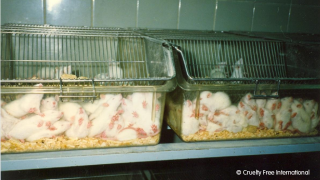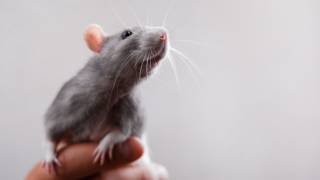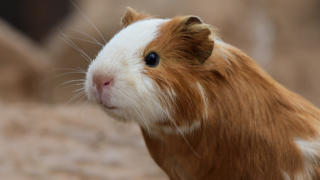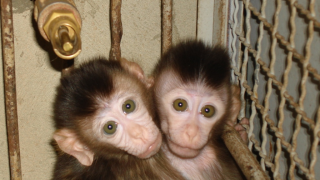Flawed animal testing sees cash spent on cancer drug that doesn’t work

A recently published paper by researchers from McGill University in Canada has shown that animal experiments of the anti-cancer drug Sunitinib were very poorly designed, inadequately conducted, and selectively reported. (1)
The researchers looked at 158 experiments in which 2716 animals were given cancer and the effects of the drug on the size of their tumors was recorded. The authors found that experiments which showed the drug did not work were far less likely to be published resulting in a ‘publication bias’. As a consequence, they estimated that the drug was claimed to be up to 45% more effective in people than it actually is.
The lead researcher of the project Jonathan Kimmelman said that “Pre-clinical [animal] research is plagued by poor design and reporting practices, exposing patients to harmful and inactive agents, wasting time in the lab and driving up the price of drugs.” (2)
We find the results of this study disturbing, yet unsurprising. It adds to the growing evidence that many animal studies are so poorly designed and conducted that –without even taking species differences into account - they collectively provide meaningless information.
Nevertheless, due to inherent, fundamental, widespread and significant species differences, it would be a mistake to assume that ‘tightening things up’ in terms of better experimental design and conduct would solve these problems. As well as criticising the poor reporting of animal experiments the authors also criticised the use of young female mice who are artificially immunocompromised as ‘models’ of this complex disease in humans.
The failure rate in humans of new drugs that appeared to be safe and effective in animal tests is at a record level of at least 95% (3), and new cancer drugs are one of the worst classes (4). These drugs fail due to a combination of poor efficacy, as highlighted in this report, and also human toxicity that was not detected in the animal tests. We also know why this is the case: as we have shown in our own recent and comprehensive analyses: testing drugs in animals fails to contribute evidential weight concerning the safety of any new drug in humans (5).
Sources:
1. A meta-analysis of threats to valid clinical inference in preclinical research of sunitinib. http://elifesciences.org/content/4/e08351
2. Flawed animal testing sees cash spent on cancer drug that DOESN'T work. http://www.express.co.uk/news/uk/611747/Kidney-cancer-drug-sunitinib-animal-testing-flawed
3. KMR Group Inc. Annual R&D General Metrics Study Highlights New Success Rate Drug sand Cycle Time Data CHICAGO, Illinois, August 8, 2012.
4. High drug attrition rates--where are we going wrong? Nat Rev Clin Oncol 8, 189-190.
5. Bailey, J., Thew, M. & Balls, M. (2014). An Analysis of the Use of Animal Models in Predicting Human Toxicology and Drug Safety. Alternatives to Laboratory Animals 42, 189-199.












